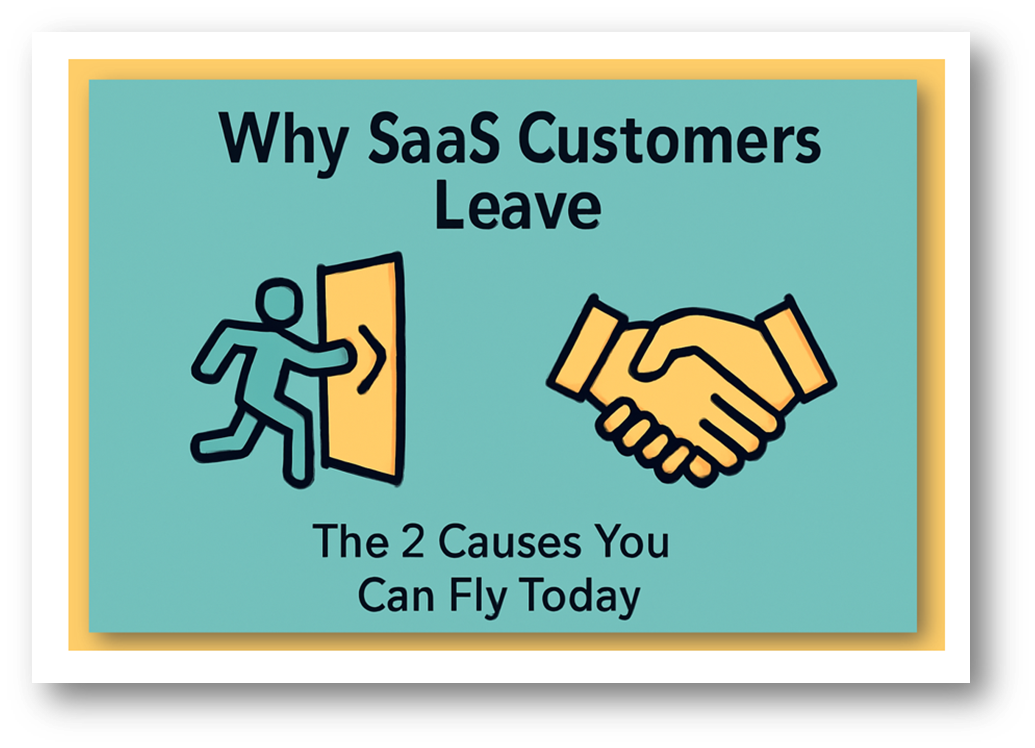Sonu Goswami Why SaaS Customers Leave (And How to Keep Them)
Learn the top 2 reasons SaaS customers churn and discover proven retention strategies to reduce customer loss and boost long-term revenue growth.
Press enter or click to view image in full size

SaaS Churn
Last month, I watched a SaaS company lose their biggest customer. Not because of pricing. Not because a competitor swooped in.
Their internal champion got promoted to a different department.
That’s it. Three years of relationship-building, gone overnight.
This stuff keeps me up at night because it happens everywhere. After analyzing churn data from dozens of SaaS companies, two patterns keep showing up:
- New customers never get their first win
- The person who bought your product leaves the company
Both problems are fixable. Most companies just don’t see them coming.
The 30-Day Onboarding Window
Here’s what I’ve noticed: customers make up their minds about your product way faster than you think.
If someone doesn’t see clear value in 30 days, they’re already mentally checked out. They might stick around for months (contracts, switching costs, whatever), but they’re not really there.
I worked with a project management tool that had this exact problem. Their signup-to-value time was 45 days. Churn rate? 40% in year one.
We dug into their onboarding and found the issue — new users spent two weeks just setting up their workspace before they could actually manage a project.
What Actually Works
Mixpanel does something clever. When you sign up, your dashboard isn’t empty. It’s filled with sample data that looks exactly like what your real analytics might show. You immediately get it.
Figma lets you replay their onboarding anytime. Sounds simple, but most tools make you hunt through help docs if you forget something.
The companies that nail retention focus on one thing: getting customers to their first “this is actually useful” moment as fast as possible. Companies that reduce time-to-first-value to under 14 days typically see churn drop by 25–30%.
What’s your current signup-to-first-value timeline? Most founders guess wrong about this.
Some tactics that work:
- Show value before asking for setup work
- Use real examples, not generic placeholder text
- Make help contextual (right when people need it)
- Track satisfaction at day 7, 14, and 30
The Champion Problem Nobody Talks About
Every successful SaaS sale has a champion — someone internal who pushed for your product and got everyone on board.
When that person leaves, your relationship resets to zero.
I’ve seen this kill renewals that should have been automatic. The new person inherits a tool they didn’t choose, don’t understand, and frankly might not even want.
Gainsight figured this out years ago. They map multiple relationships from day one. Not just the main buyer, but their boss, their team, even people in other departments who use the tool.
It’s insurance. If your champion leaves, you’re not starting from scratch.
How to Champion-Proof Your Accounts
The companies that survive champion changes do three things:
- They identify backup relationships early (not during renewal season)
- They treat champion departures as sales opportunities, not retention problems
- They reward their customer success teams for saving accounts after champion turnover
When someone new takes over, don’t just send them a “welcome” email. Re-sell them on why this tool matters for their specific goals.
From Reactive to Systematic
Most SaaS companies treat churn like weather — something that happens to them.
The smart ones treat it like maintenance — something you prevent with regular check-ups.
I worked with a company that built simple dashboards tracking:
- Days to first value (by customer segment)
- Champion contact frequency
- Secondary relationship strength
Nothing fancy. Just visibility into the things that actually predict churn.
When their main champion at a big account went quiet for 30 days, they knew to investigate. Turned out, she was interviewing for new jobs. They spent that month building relationships with her teammates.
She left two months later. The account renewed anyway.
The Real Question
Which one of these is killing your retention right now?
Slow onboarding that never delivers the promised value? Or champions who leave and take all your context with them?
Most SaaS founders I talk to know exactly which one it is. They just haven’t made fixing it a priority yet.
Here’s the thing — your competitors are dealing with the same two problems. The ones who solve them first are going to win.
Drop a comment below: Which retention killer hits your business harder — onboarding that drags on forever, or champions who disappear? I read every response and often turn the best discussions into follow-up articles.

